Remember when ‘likes’ were the gold star metric on Instagram? Now, you’re spoiled for choice when it comes to the sheer volume of data available to help you measure your content's performance — which is exciting, even if it can feel a little overwhelming at first.
Instagram analytics are a goldmine. As a creator or small business owner, you can use them to understand which posts resonate with your audience.
But how do you get these insights? How do you spot patterns, connect the dots, and use your performance numbers to inform your strategy? And are there handy tools that can do the work for you?
In this article, we'll explore the most important Instagram analytics and look at tools that can help you make sense of all that valuable data.
Jump to a tool:
- 1. Buffer — Best Instagram analytics tool for built-in social media management
- 2. SocialBlade — Best Instagram analytics tool for getting basic analytics
- 3. Mintor — Best Instagram analytics tool for agencies
- 4. Social Status — Best Instagram analytics tool for analyzing various kinds of campaigns
- 5. Reportei — Best Instagram analytics tool for automated reporting
- 6. Keyhole — Best Instagram analytics tool for social listening
Comparison table: The best Instagram analytics tools
Which Instagram metrics matter?
There are plenty of numbers in Instagram analytics tools. Should you be monitoring all of them? You could, but you don't need to feel overwhelmed by tracking everything. Prioritize monitoring a few key metrics that help you determine whether or not you’re achieving your social media goals.
For most creators, and some brands, reaching as many people as possible is likely the primary goal.
If that’s the case, Instagram head Adam Mosseri recommends keeping an eye on average watch time, like rate, and send rate. (embed post)
But there is more nuance involved here if your social media strategy is concerned with more than eyeballs. For example, Instagram coach, Elise Darma, shared she pays attention to the metrics that have a direct impact on her business, including:
- How many people are moving from her content into meaningful conversations in DMs
- The quality of comments and engagement on her posts
- How many non-followers are discovering her content
Here’s a table to help you understand the key Instagram metrics and when you should prioritize tracking them.
These Instagram metrics are readily available in the app itself. All Instagram analytics tools have these insights and then some. Ideally, you should monitor the performance data behind every single post.
“Here's the thing about metrics — every post is data, even the ones that seem to flop,” says Elise. “Instead of getting caught up in day-to-day numbers, use each post as an experiment. What's working? What's not? Then use those insights to refine your strategy.”
How to view your Instagram analytics in the app
All core Instagram analytics are available in the app. You must have a business or creator account on Instagram to view your insights.
There are two ways to view your Instagram analytics on the app:
- View a single Instagram post’s insight
- View your Instagram account’s performance as a whole
To view a single post or reel’s highlight, click on ‘View insights’ attached to the bottom of every post. You’ll find likes, shares, comments, saves, and reposts for that post. You can also see how many accounts you’ve reached with a single post, where those accounts came from (home, explore, profile, etc.), and how many were new accounts.
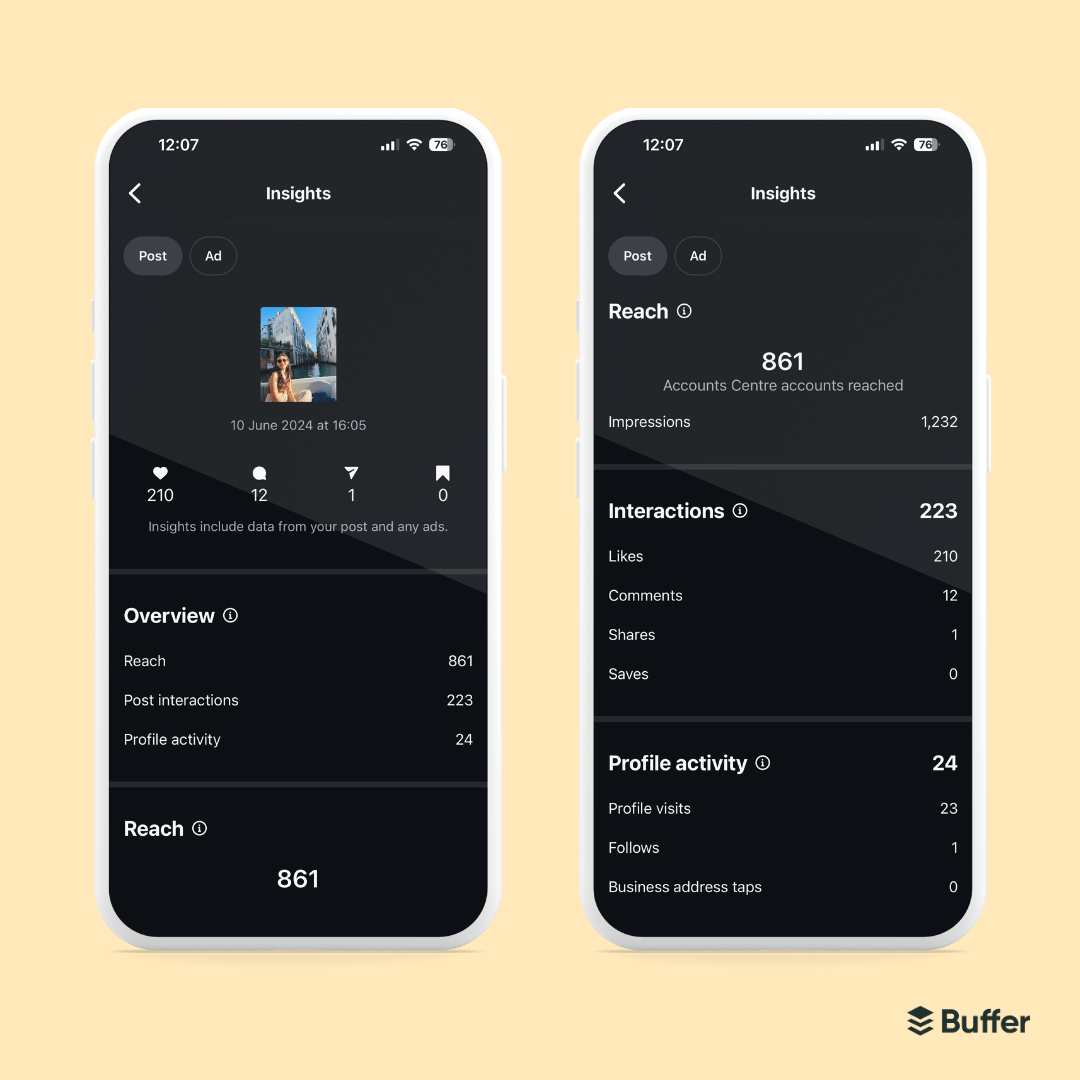
To view your Instagram account insights as a whole, follow these steps:
- Go to your Instagram profile
- Click on the three horizontal lines at the top right to go to ‘Settings and activity’
- Tap on ‘Insights’ to view Instagram insights
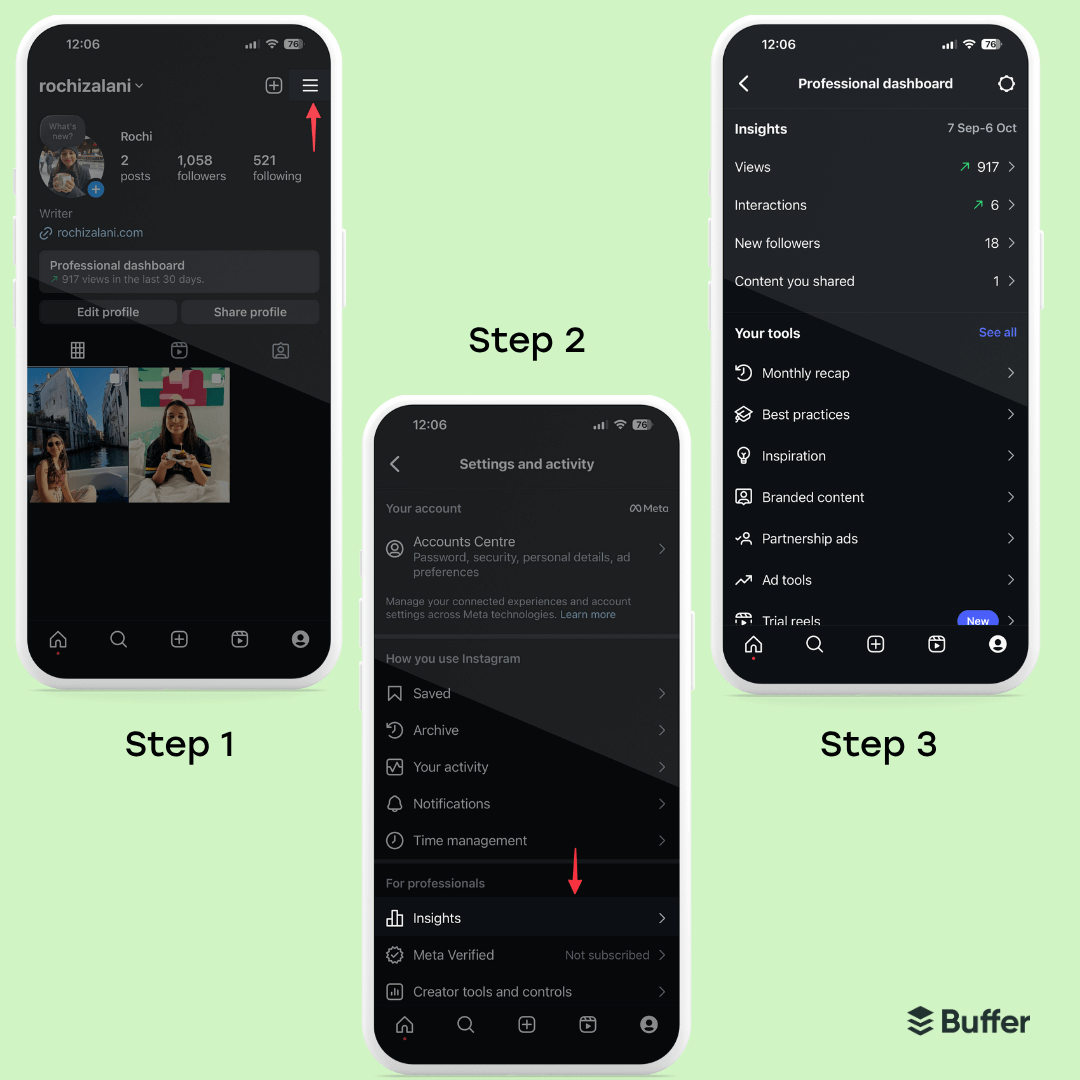
Inside the analytics tab, you can find your Instagram’s key metrics in one of three categories:
- Views: To see your profile activity, audience demographics, top-performing posts, and ratio of followers vs. non-followers.
- Interactions: To see how many Instagram accounts you’ve engaged and the number of likes, saves, replies, and shares on your posts and Instagram Stories.
- New followers: To see how your follower growth has fluctuated in a specific period (but no more than 90 days), follower demographics, and when your audience is the most active.
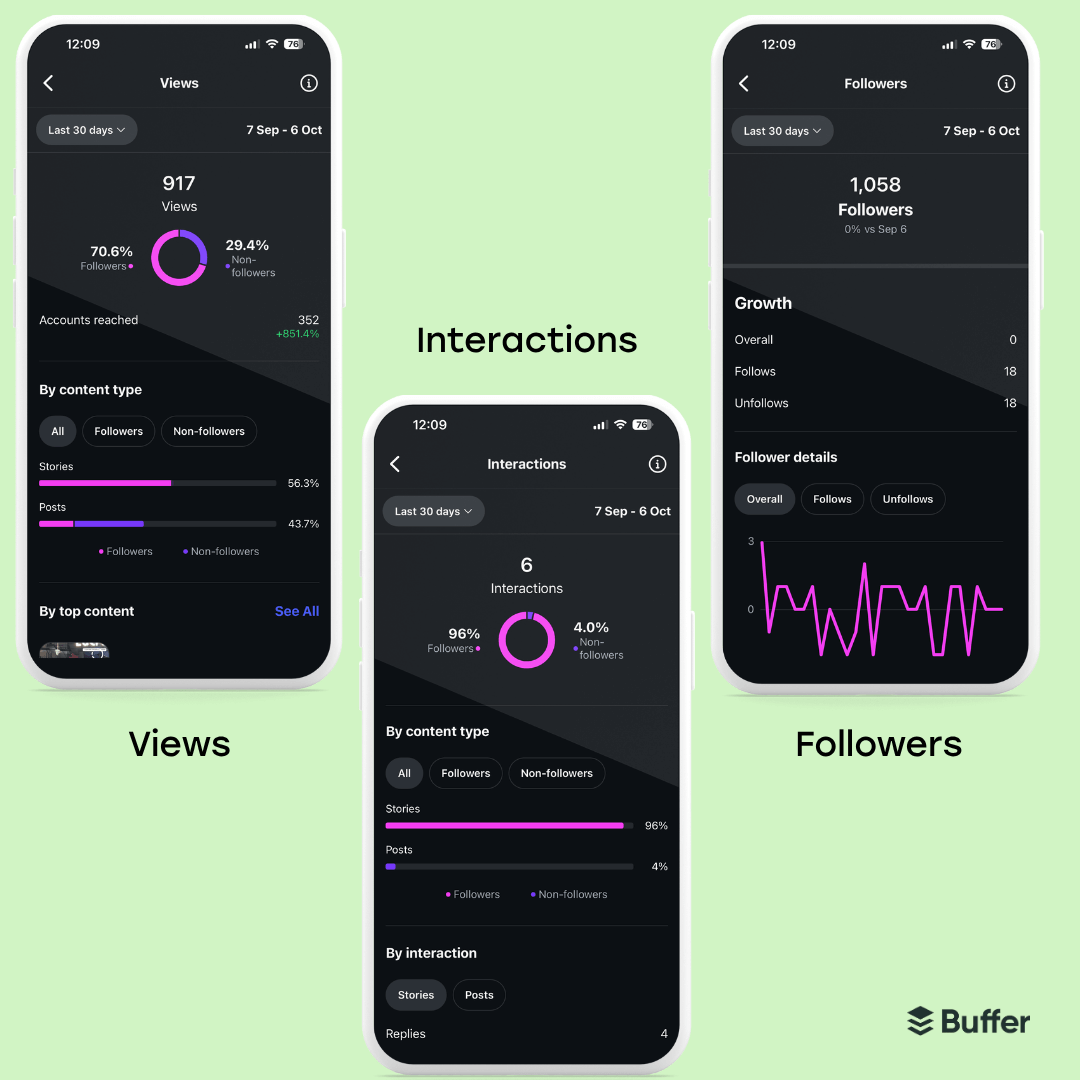
If you have an Instagram business account, you can also view insights for Instagram and Facebook side-by-side on Meta Business Suite (Meta’s free management dashboard).
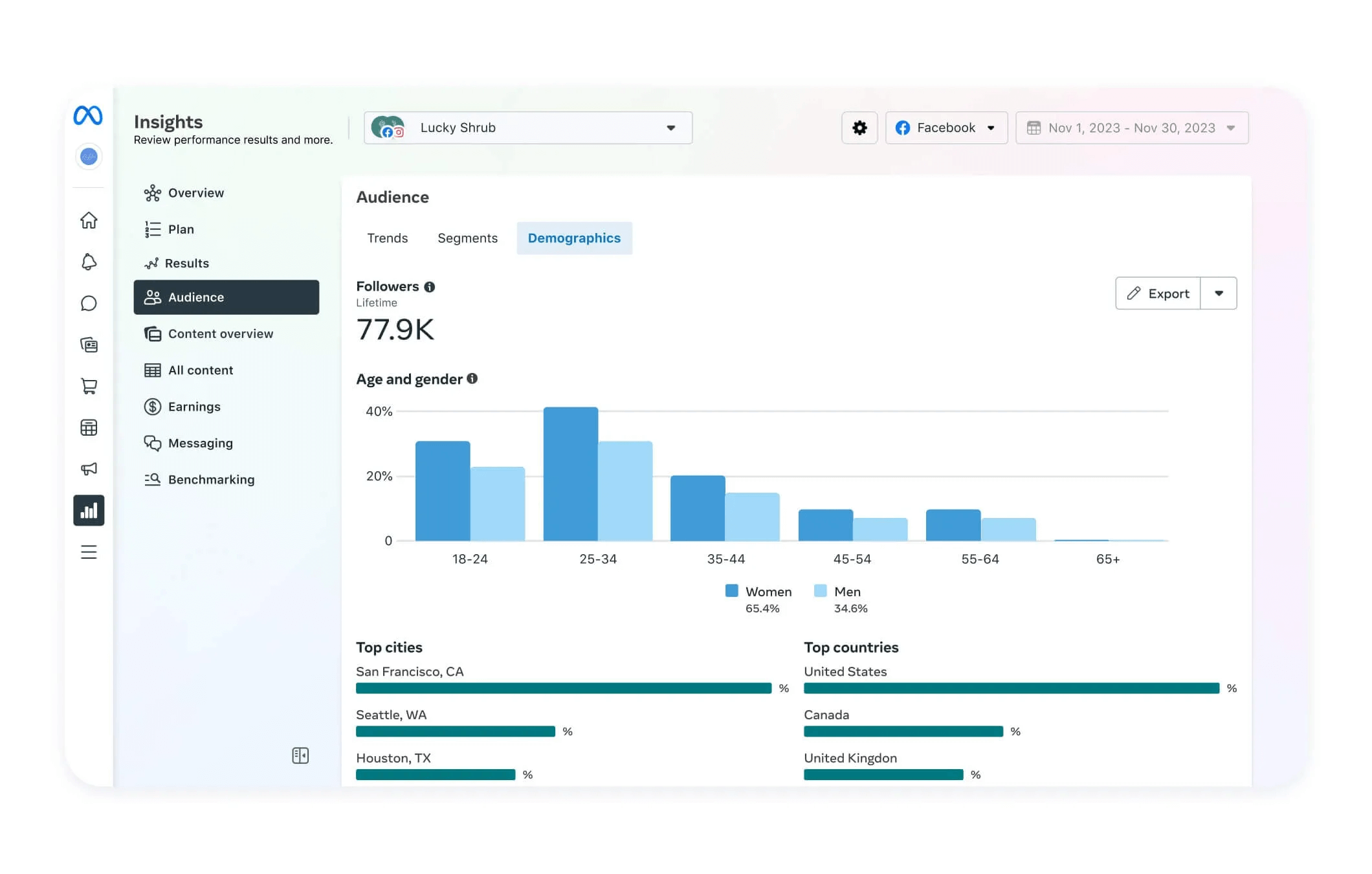
The 6 best Instagram analytics tools
What should you look for in an Instagram analytics software? Evaluate your needs first.
- Do you need a strong reporting tool to create Instagram analytics reports? Social media managers might have an extra requirement for this feature, while creators can do without it.
- Are you a social media marketing agency? You may need a robust Instagram analytics dashboard to access your clients’ current metrics quickly.
- Solo marketer working with a tight budget? You need flexible Instagram analytics tools that also double as a social media management platform.
- Creator building a personal brand? Look for more affordable Instagram analytics tools.
Your reporting needs and budget should determine which Instagram analytics tool is right for you. The following list includes at least one Instagram analytics software for every use case.
1. Buffer
Best Instagram analytics tool for built-in social media management
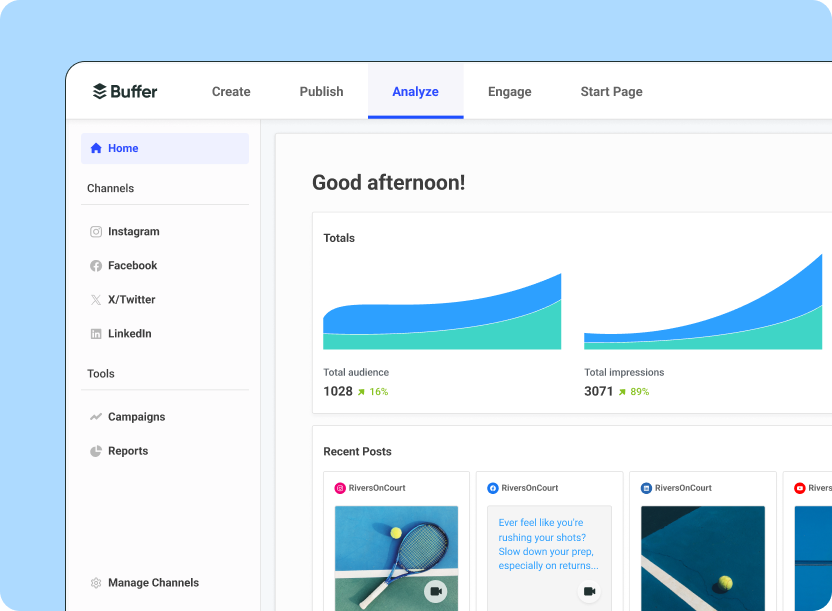
Free trial: Free plan available with some analytics
Price: Starts at $6/month
Buffer is the best Instagram analytics tool for people who need a one-stop shop for all the work that goes into social media. Buffer’s Instagram Analytics tools provide detailed analytics about your Instagram account, and also help you:
- Store content ideas
- Respond to comments
- Schedule social media posts
- Use AI to refine social media captions
- ...and a host of other things.
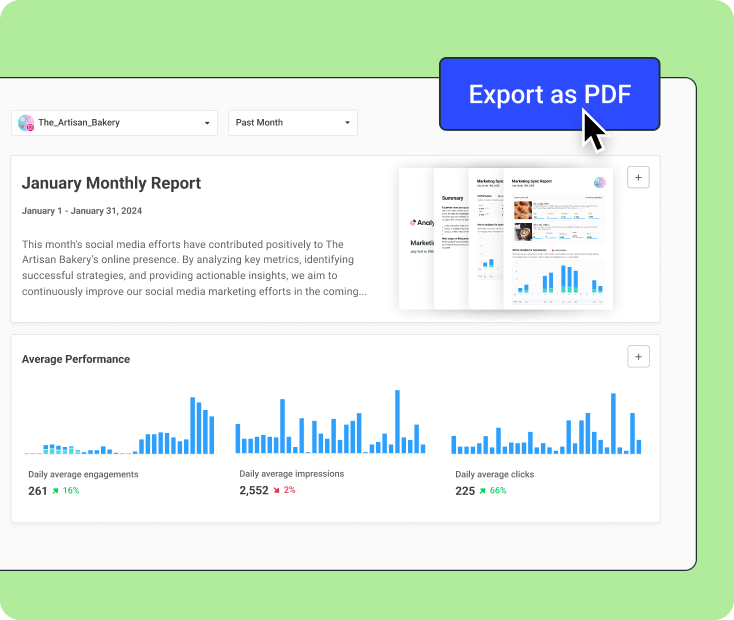
Buffer makes social media management straightforward — there's no steep learning curve, so you can focus on creating great content instead of figuring out complicated tools.
In terms of Instagram analytics, you get a comprehensive analytics dashboard that won’t just show you the numbers. It handles all the calculations and gives you actionable insights based on your specific performance: best time to post, type of post, and posting frequency.
You can also create beautiful and customized reports and white-label them (really handy if you’re a social media manager presenting to a client, or a creator pitching a brand partnership).
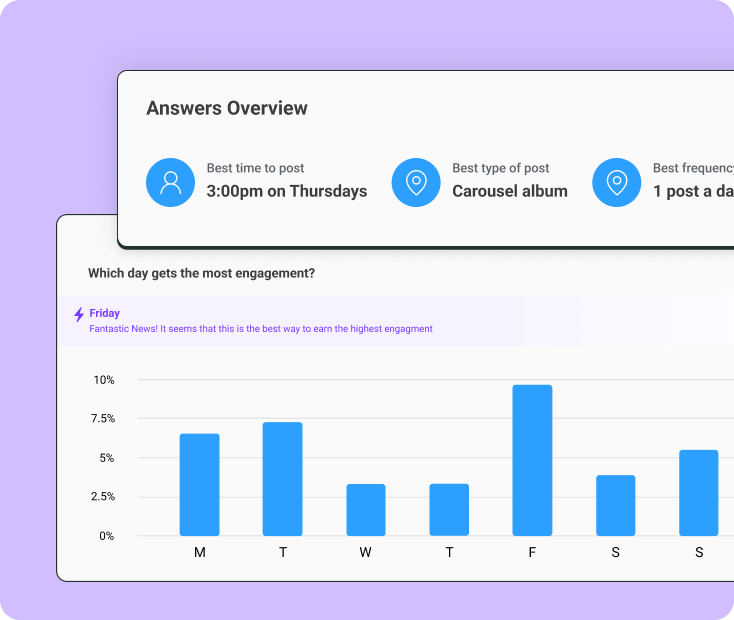
The best part? These social media analytics are available for most platforms that Buffer supports, not just Instagram. There’s no better way to analyze your social media marketing strategy or creator presence across channels.
2. SocialBlade
Best Instagram analytics tool for getting basic analytics
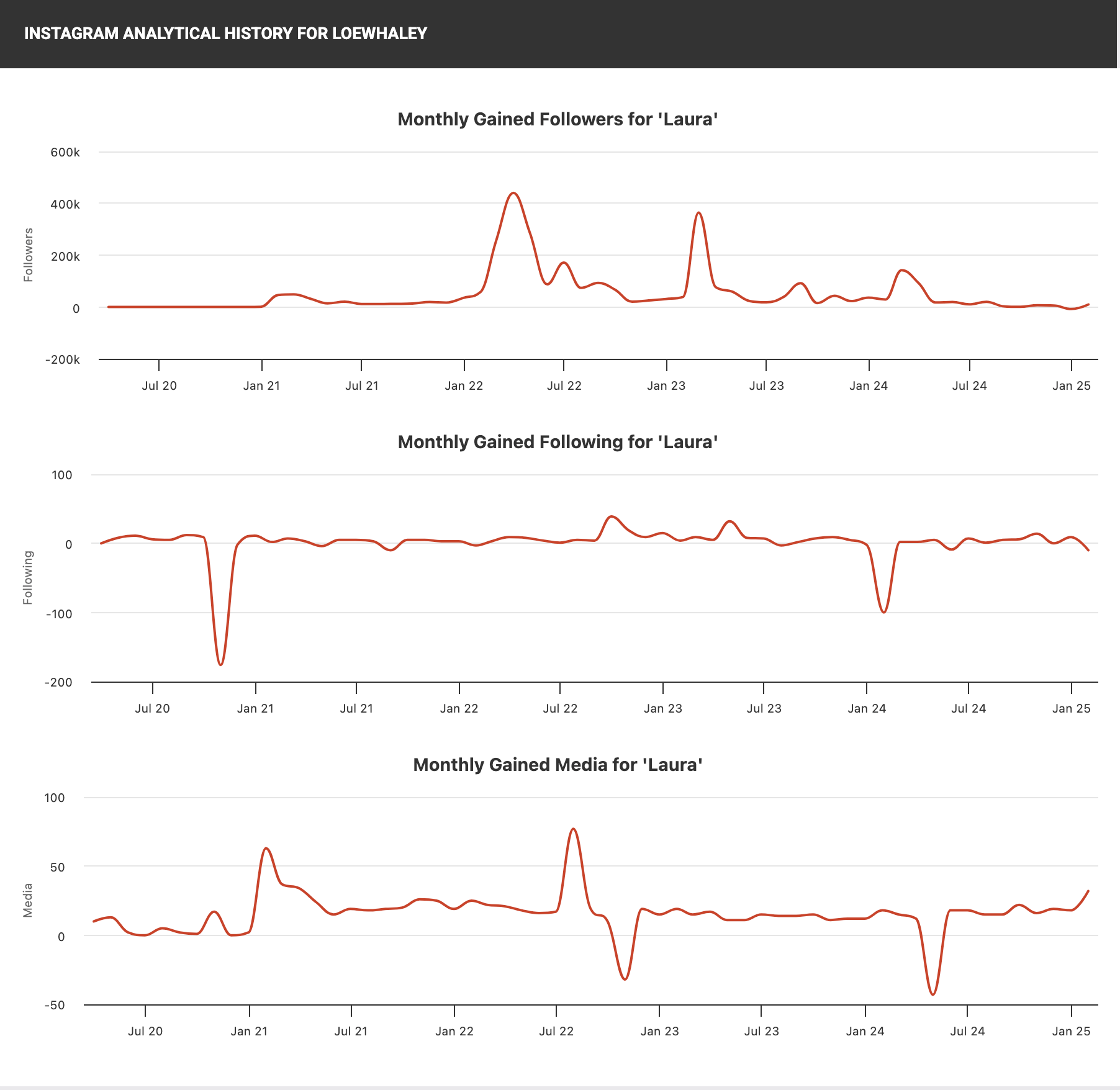
Free trial: Free plan available with limited features
Price: Starts at $4.99/month
SocialBlade is one of the best Instagram analytics apps if you want something free and basic. It doesn’t have all the bells and whistles — it only tells you follower fluctuation, average likes and comments, and engagement rate.
It’s not ideal software for someone seeking valuable insights to inform their Instagram marketing strategy. However, it might be the right choice for social media managers handling influencer marketing campaigns and monitoring an influencer’s follower growth.
It’s worth remembering that Social Blade primarily only shows follower growth. It doesn’t have charts or numbers showing how an Instagram profile’s engagement rate has fluctuated over time.
What is particularly helpful, though, is that Social Blade has 30-day data on follower growth or decline — helping you pinpoint which post(s) exactly helped gain or lose followers.
3. Mintor
Best Instagram analytics tool for agencies
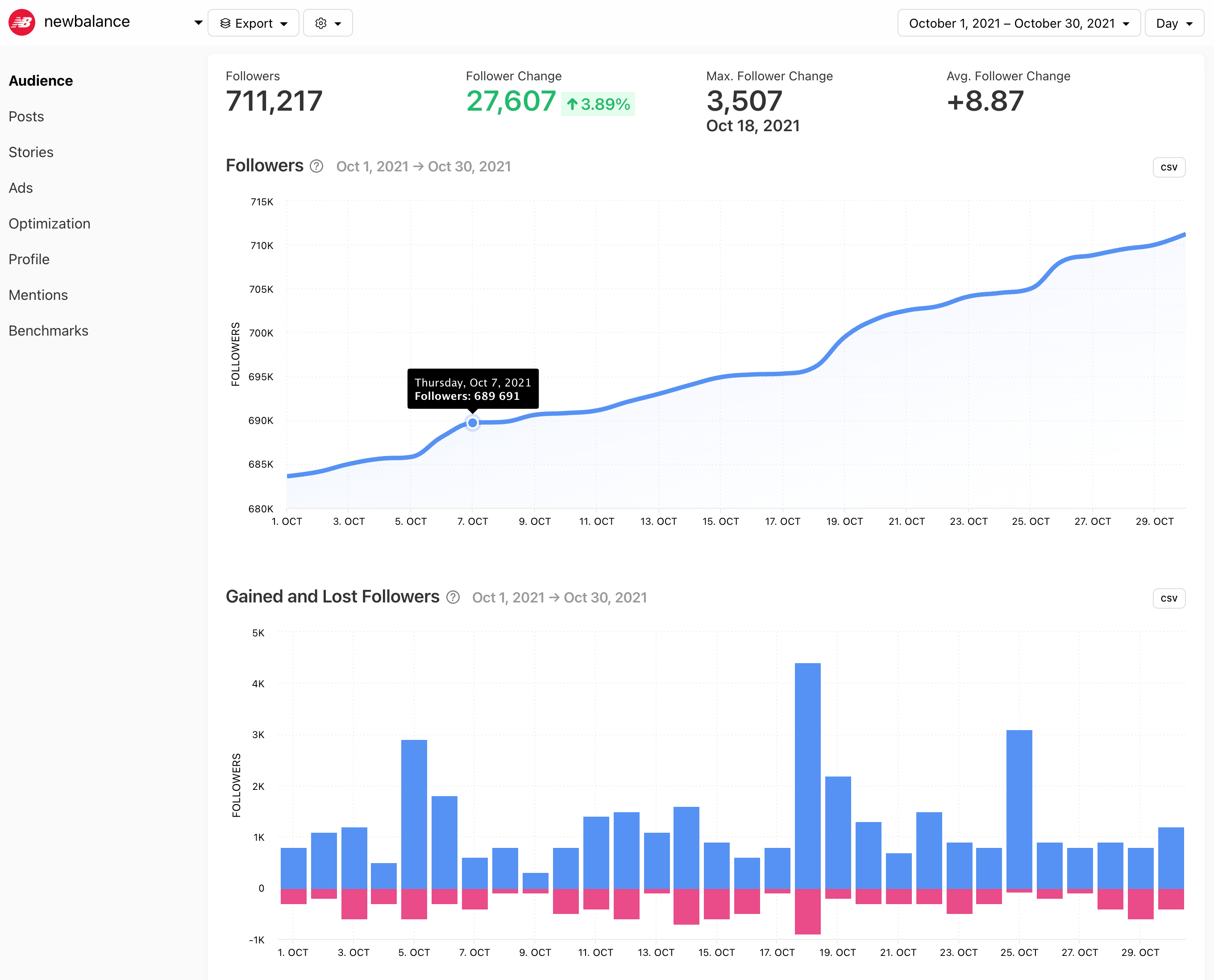
Free trial: 14 days
Price: Starts at $9/month
Mintor is a social media analytics tool that contains insights for Instagram, X, TikTok, Facebook, Threads, and LinkedIn. It’s a great analytics software for agencies managing multiple Instagram accounts. You can add multiple Instagram profiles in a single dashboard and switch between them easily to find the data you need.
Mintor also stores insights on your Instagram Stories for longer than two weeks (unlike native Instagram insights).
The Instagram analytics data isn’t anything out of the ordinary. You can find all these insights on your app directly, too, but Mintor collates them for you in a single analytics dashboard. It also tracks mentions of your account and benchmarks your analytics against similar accounts. You can also get a breakdown of your ad analytics and compare it to your organic performance if you’re running ads on Instagram.
4. Social Status
Best Instagram analytics tool for analyzing various kinds of campaigns
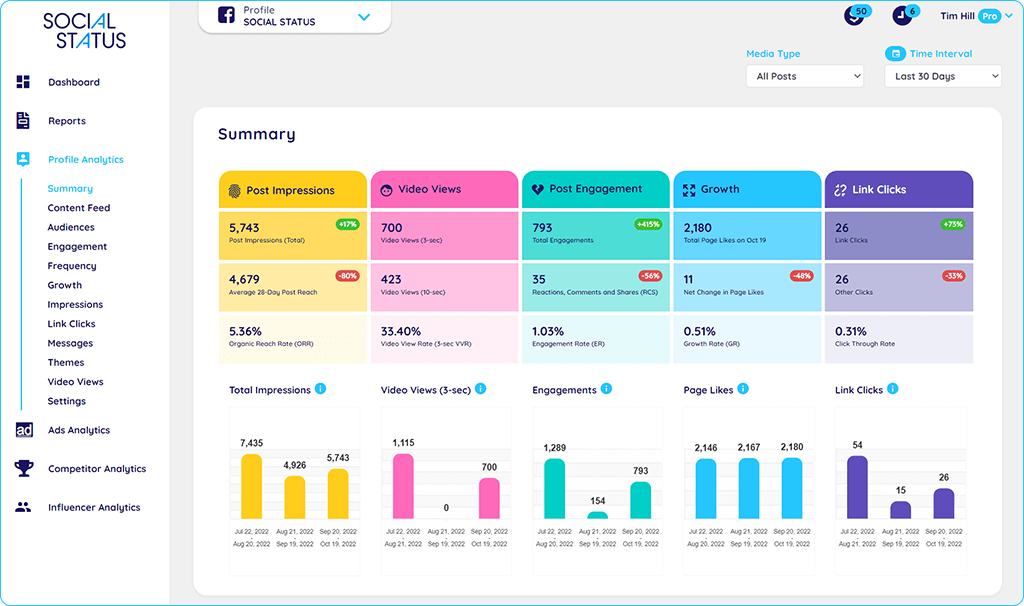
Free trial: Free plan available with only Instagram profile analytics
Price: Starts at $9/month
Social Status is an excellent Instagram analytics tool for a small business doing Instagram marketing, influencer discovery, and running ads. It provides these insights for all major social media platforms — including Instagram, Facebook Pages, X, YouTube, LinkedIn company pages, and TikTok.
It’s one of the most affordable Instagram analytics tools for social media managers running various types of campaigns. It offers influencer analytics for influencer marketing, ad analytics for Meta ads, and competitor analysis to benchmark your performance.
All of this is in addition to the detailed organic Instagram analytics it already has. If you don’t want to use other Instagram analytics tools to track and monitor each campaign, Social Status is perfect.
The free version has only the Instagram profile analyzer, which will give you insights into your Instagram posts, follower growth, and Instagram audience.
5. Reportei
Best Instagram analytics tool for automated reporting
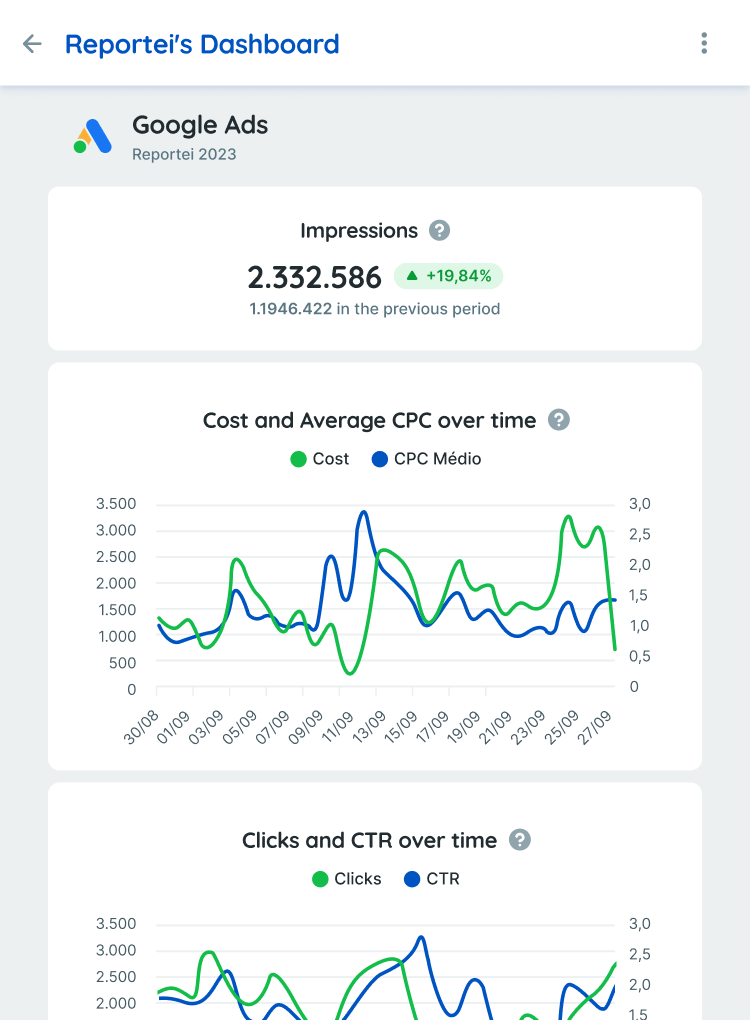
Free trial: 3 days
Price: Starts at $24/month
Reportei is a perfect reporting tool for creating customized and automated Instagram analytics reports. Social media managers have to put in a lot of effort to create customized reports and present their social media efforts in a concise PowerPoint presentation.
With Reportei, the work becomes a tad easier. It specializes as a reporting tool and is AI-powered — you can chat with the AI to derive detailed insights from your raw numbers. There are various ready-to-use templates available in the tool as well.
The “timeline” feature is one of the most unique — you can record campaign milestones in a story format with dates and events. This can help you present a more accurate picture of your Instagram analytics.
6. Keyhole
Best Instagram analytics tool for social listening
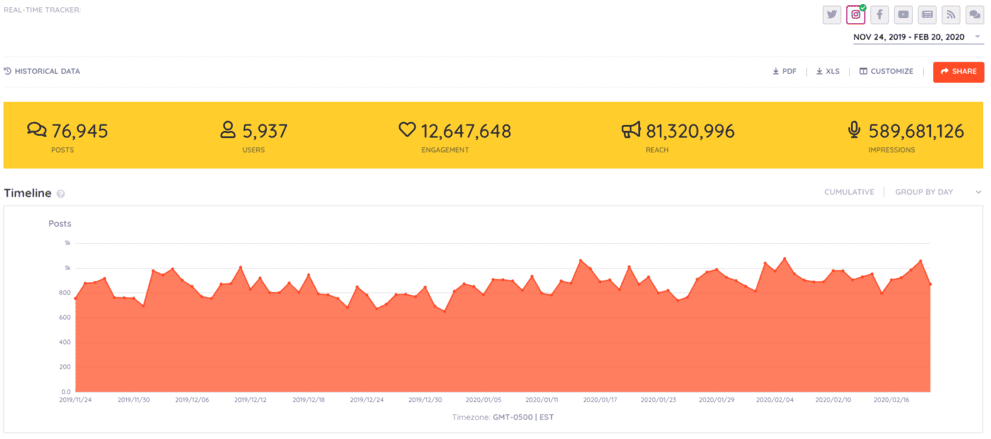
Free trial: Not publicly available
Price: Not publicly available (you need to take a demo)
Keyhole doubles as a social media analytics tool and a social listening tool. It has all the traditional insights:
- Instagram Stories analytics
- Historical data on performance
- Instagram audience demographic data
- Detailed metrics on Instagram hashtags
- ...and more
Tracking key metrics like the ones above will help you prove the impact of your Instagram presence to stakeholders.
But the best part of Keyhole is it doubles as an excellent social listening tool. You can spot trends, monitor competitors, and stay connected to what people are talking about in your industry. If your social media strategy focuses on deep social listening, Keyhole is the perfect tool.
How to use your Instagram analytics
Instagram analytics tools are great, but they can’t tell you what you should do with the raw data. Deeper insights are always contextual — so you have to find how Instagram analytics inform your strategy.
If you’ve started out by setting goals, monitor how closely you achieved your objectives. Which metrics did you achieve easily? Which KPI did you struggle to hit?
Once you’ve done this, zoom out and look at the performance data more broadly. What went unexpectedly? Maybe your Instagram audience analytics show a larger market than you had anticipated. Perhaps the Instagram algorithm changed and your analytics shifted with it. Track engagement metrics to understand which types of Instagram posts are most effective. Then, you can double down on them for future content creation.
Dissecting your social media analytics will not only help you create more well-informed Instagram analytics reports, but also help you move your overall social strategy in the right direction.
Frequently asked questions
Do I need a business or creator account to see Instagram Insights?
Yes, you do. You can switch from a personal account to a business or creator account using the following steps:
- Click the three horizontal lines on your profile’s right-hand corner
- Go to ‘Settings and activity’
- Click on ‘Account type and tools’
- 4. Tap ‘Switch to a professional account’5. Choose between a creator or a business account
A creator account is best for content creators, influencers, artists, and public figures. Business accounts are best for retailers, service providers, and small businesses. Learn more about the three types of Instagram accounts and pick the right one for you.
How do I choose the right Instagram analytics tool for my goals?
Here’s how you can make the right choice:
- Define your primary goal. For example, do you want detailed reporting, social listening, or a tool that also schedules posts?
- Consider your budget and determine whether you require features such as white-label reporting or multi-account support.
- Verify if the tool integrates with the social platforms you use most frequently. It’s best to use a tool that can do multiple tasks (like schedule posts, help respond to comments, and track performance). Or one that connects with multiple platforms that you use (Instagram, TikTok, YouTube, etc.). The best of both worlds is when you pick an all-in-one tool that does it all and connects to every social platform you need.
- If possible, try a free plan or trial to see if the tool fits your workflow and is easy to use before committing to a paid plan.
Every creator or brand’s needs are different, so start by trialing one or two tools that align with your top priorities.
How far back can Instagram Insights show my data?
Instagram stores insights for up to 90 days. For longer look-backs or annual reports, use a third-party analytics tool that saves historical data.
More Instagram resources
Try Buffer for free
190,000+ creators, small businesses, and marketers use Buffer to grow their audiences every month.




